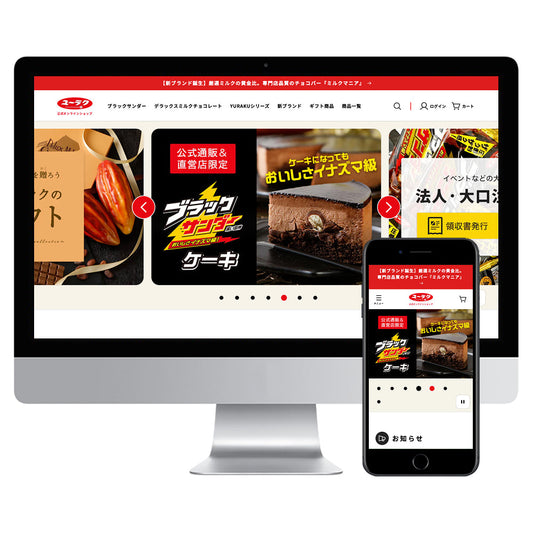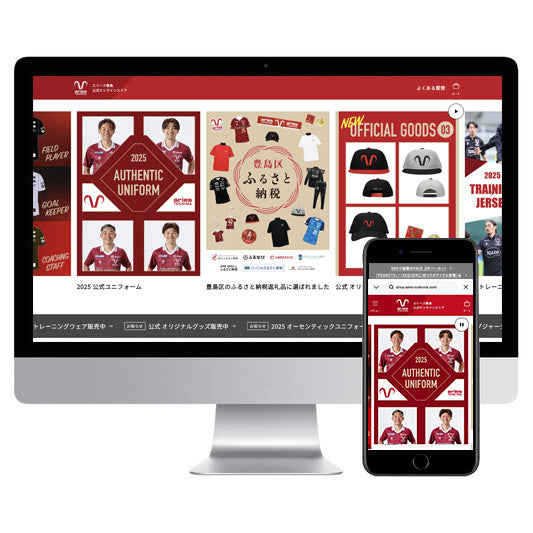Are you familiar with the "OMS/WMS integrated system" that has been gaining attention in recent years?
This system integrates the order/inventory management system "OMS" and the warehouse management system "WMS" into one. By having the EC operator who manages the order and the warehouse operator who handles the shipping work use one system, more seamless cooperation is possible and most of the flow from order to shipping can be automated. This makes it possible to realize speedy operations with almost no touch and no errors from order to shipping.
In this article, we will explain the benefits of an integrated OMS/WMS and the integrated system LOGILESS, which is the system our company primarily uses.
table of contents
- OMS and WMS Features
- What is an OMS/WMS integrated system?
- Benefits of introducing an integrated OMS/WMS system
- "Automatic shipping" is possible with almost no touch from order to shipment
- No data discrepancies or time lags occur between EC businesses and warehouses
- Increase customer satisfaction
- LOGILESS enables automated shipping even for complex orders
- "Macro function" supports complex order conditions
- Multiple warehouse locations can be linked together
- Easily add sales channels
- summary
OMS and WMS Features
Before we get into the main topic, let's review the functions and roles of OMS and WMS.
For more information about OMS and WMS, please see the article below.
What are the benefits and points to note about OMS and WMS? A thorough explanation of key points for implementation!
What is an OMS (Order/Inventory Management System)?
An OMS (Order Management System) is a system that consolidates EC order management, inventory management, product management, etc. For EC businesses, it is an important tool for optimizing the process from order to product delivery.
This system is useful when you have multiple online stores. Since you can centrally manage product information and order details for multiple stores, using an OMS can greatly improve work efficiency .
- Order management: Managing order registration, changes, and cancellations
- Inventory management: receiving, issuing, allocation, etc.
- Payment management: Payment status and refund management
- Shipping management: Shipping instructions/cancellations, arrangements, and shipping record registration
- Product management: Managing basic product information such as product numbers and names
- Email sending: Functions for sending order confirmation emails and shipping notification emails, etc.
What is a WMS (Warehouse Management System)?
A WMS (Warehouse Management System) is a system that centrally manages warehouse operations, such as receiving, inventory, shipping, inventory counting, document issuance, and location, from the time goods and materials arrive until they are shipped. It is equipped with functions that support the receiving, storage, and shipping of goods efficiently and without errors.
- Receiving management: Receiving schedules, label management for incoming products, etc.
- Shipping management: Managing shipping schedules and shipping records, issuing instructions, and creating picking lists
- Inventory management: Centralized management of information such as inventory location, quantity, expiration date, and manufacturing date
- Document issuance: Issuance of labels, documents, delivery notes, and purchase orders required for inventory management
- Inventory management: Inventory instruction function and easy input by scanner, etc.
What is an OMS/WMS integrated system?
Until now, OMS and WMS have been introduced as separate systems, but in recent years, an increasing number of companies are introducing integrated OMS and WMS systems.
Let's take a look at the characteristics of each.
Separate OMS and WMS systems
Since the two systems are independent, if there is no API integration between the systems, you will need to share CSV data manually. Even if API integration is possible, it may not be possible to integrate all data, so system customization may be required.
As a result, while efficiency can be improved within each system, there are still issues such as the need for manual work to link systems together.

OMS/WMS integrated system
In the case of an integrated OMS/WMS, it is a single system, so there is no need for the implementation work that previously occurred to connect systems. Because the EC business and the warehouse business use the same system and refer to the same information and data is linked in real time, the entire flow from orders to shipment, delivery, and inventory management is centrally managed, and the entire process from order to shipment can be automated.
With an integrated OMS/WMS like this, you can maximize the benefits of both the OMS and WMS and reduce the amount of work that was previously spent on integrating the OMS and WMS.

Benefits of introducing an integrated OMS/WMS system
Next, we will introduce the benefits of introducing an integrated OMS/WMS.
"Automatic shipping" is possible with almost no touch from order to shipment
"Automatic shipping" refers to the automation of a series of operations from order receipt to shipping.
If there are no errors or confirmation items in the order information, inventory checks, payment confirmations, and even shipping instructions to the warehouse will be carried out automatically. E-commerce businesses only need to handle orders that require confirmation, which significantly reduces their workload.
By introducing an integrated OMS/WMS system and outsourcing shipping operations to an agent, basic tasks from order receipt to shipping will be automated and manual work will be almost completely eliminated.

The realization of automated shipping is expected to have the following effects:
- Business efficiency
- Reduce mistakes
- Store expansion
Since there is almost no touch from order to shipment, not only will business efficiency improve, but manual work will be drastically reduced, and human errors will also be reduced. In addition, the amount of time spent on orders and shipment will be drastically reduced, making it possible to expand stores and freeing up time to think about promotional measures and product planning, which will lead to increased sales.
* Most tasks are automated, but manual steps may be required for irregular cases such as changing, cancelling or confirming an order.
No data discrepancies or time lags occur between EC businesses and warehouses
If the OMS and WMS cannot be linked, it can result in time-consuming tasks such as creating and transferring CSV data, and can also cause discrepancies due to time lags.
With an all-in-one system, everything is managed under the same system, so changes to orders and inventory are reflected in real time and there is no time lag.
In addition, because data is shared within the same system, the shipping work status at the warehouse can be checked in almost real time. Even if you do not check the work progress, you can see what kind of shipping work is currently being done at the warehouse by looking at the system.
Human errors that previously occurred on either the e-commerce business or the warehouse business side can also be reduced with an integrated OMS/WMS.
Increase customer satisfaction
The realization of "automated shipping" will lead to improved service quality, which will ultimately lead to increased customer satisfaction.
- By shortening delivery lead times, we can deliver products to customers more quickly.
- Real-time inventory management eliminates stockouts and ensures that products are delivered to customers.
- By increasing efficiency, you will be able to devote more time to sales promotion, product planning, and expanding sales channels.
As the number of online shops increases and competition intensifies, improving customer satisfaction is extremely important, as it allows you to differentiate yourself from your competitors and increase your LTV.
LOGILESS enables automated shipping even for complex orders
After reading this far, some of you may be wondering, "Will most of the work really be automated?" or "Complex order conditions cannot be automated, so in the end, won't work still need to be done by humans?" It is true that just because an integrated OMS/WMS system is introduced, it does not necessarily mean that "automatic shipping" can be realized. For example, if there are complex order conditions such as "only attach a novelty to orders with a purchase amount of 10,000 yen or more," manual or visual confirmation will place a heavy burden on the operations staff. Therefore, whether or not personalized order conditions (shipping instructions) can be automated is a key point in realizing "automatic shipping."
Therefore, we would like to introduce you to "LOGILESS", an integrated OMS/WMS system that we also use.
Let's take a look at what features LOGILESS has.
"Macro function" supports complex order conditions
LOGILESS has its own RPA "macro function" that allows you to set up automated operations according to the rules of each store.
Even if you have complex order condition branching such as "If XX, then do XX", you can automate shipping instructions by setting the condition in the macro function. When there are complex condition branching or rules, manual handling can be troublesome as it requires a lot of man-hours, there are many mistakes, and it depends on the individual. By utilizing this macro function, the system can be automated, and order management without human intervention can be realized.
*For orders that are not automatically processed by the macro function, you can put them in a pending shipping status of "Waiting for confirmation." In this case, you will need to handle the order manually.
*It is essential to set conditions in advance on LOGILESS when using the macro function.
Here are some rules for the macro function we use:
- Control the shipping time of reserved items . Orders containing specific items will be put on hold (waiting for confirmation status) until △ month △ day.
- Change shipping method depending on the number of items ordered. For certain products, change shipping method depending on the number of items ordered (e.g. 1 item = mail delivery, 2 items or more = home delivery)
- Bonuses will be awarded when certain conditions are met. Novelty A will be awarded for orders totaling △△△△△ yen or more, and bonus B will be awarded for purchases of specific products.
Multiple warehouse locations can be linked together
At LOGILESS, we also handle shipments from multiple warehouses (shipping bases). Since you can set up warehouse bases according to the nature of your EC business, you can handle a variety of products.
- You can set a default shipping warehouse for each store.
- Shipping warehouses can be automatically allocated based on shipping conditions (delivery prefecture, delivery method, payment method).
- Inventory allocation between warehouses can be automatically processed. For example, if there is no stock in the warehouse to which a shipment is assigned, the shipping warehouse can be automatically switched to a warehouse that has stock.
Using this function, you can set up a warehouse base in the following pattern, for example.
1. Storing inventory of the same product in multiple warehouses
It is possible to store one product in two locations, Warehouse A and Warehouse B, and ship it from the warehouse closest to the delivery destination. By registering the warehouse location in LOGILESS in advance, the warehouse from which the product will be shipped will be automatically selected, and shipping instructions will be sent to the nearest warehouse.
【merit】
This will enable products to be delivered to customers more quickly , and is expected to reduce delivery costs . It will also help to spread out risk in the event of a disaster . For example, if deliveries to one area are stopped due to a natural disaster, you can switch the settings to ship from a warehouse in another area.

2. Different warehouses for each product
If an order contains multiple items, each item can be shipped from a different warehouse.
For example, if you have warehouses with two temperature ranges, frozen and room temperature, even if one order contains multiple products with different temperature ranges, the order can be automatically divided and shipping instructions can be sent to each warehouse.
When an order is received on LOGILESS, only one order document is created, but multiple shipping documents are generated for each warehouse.

Easily add sales channels
We have API integration with major domestic mall and cart systems such as Amazon, Rakuten Ichiba, and Shopify, so you can easily add sales channels.
For details, please visit the LOGILESS service site.
https://www.logiless.com/features/platforms/
LOGILESS also has a track record of being one of the first to integrate with Shopify, and is able to respond flexibly and quickly to customizations made on the Shopify side.
summary
We mainly use "LOGILESS" to achieve automatic shipping. We often hear surprised comments from operations staff who have just joined the company saying, "Order processing is automated, so there is no work to do!" and they are experiencing smooth and effortless operations.
Achieving automated shipping not only improves operational efficiency and prevents errors, but also allows you to focus on core operations such as sales promotion and product planning, leading to further increases in sales.
If you are an e-commerce business operator that has issues with order-taking and shipping, we recommend that you consider implementing an integrated OMS/WMS system.
We have experience in operating a variety of e-commerce sites and provide construction, operational support, and consulting services.
We can also provide implementation and operational support for LOGILESS, which we introduced this time. We will propose the best service for the issues that EC businesses are facing, so please feel free to contact us.





